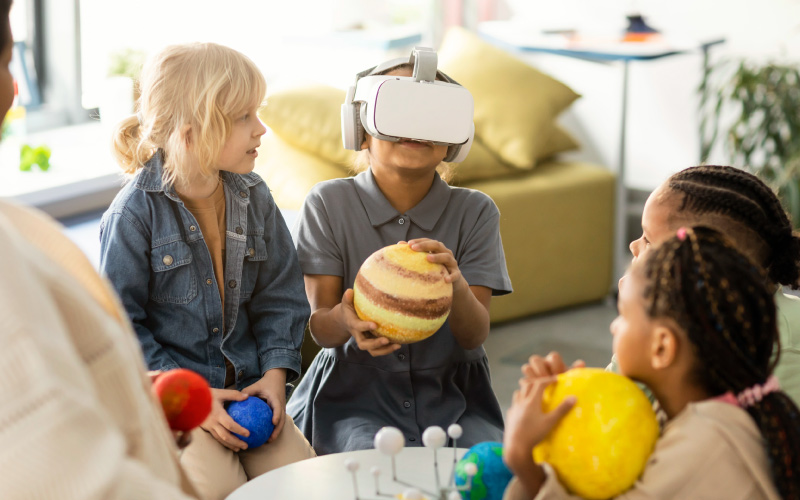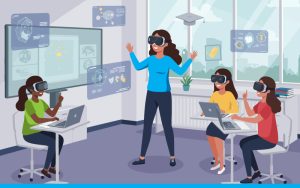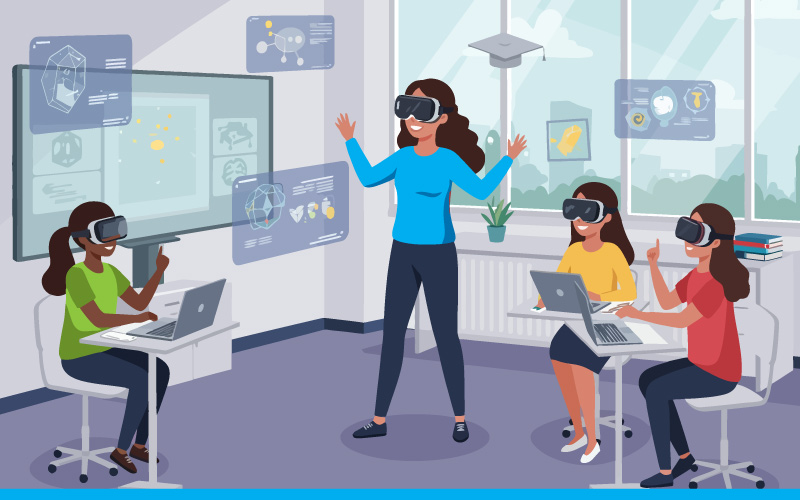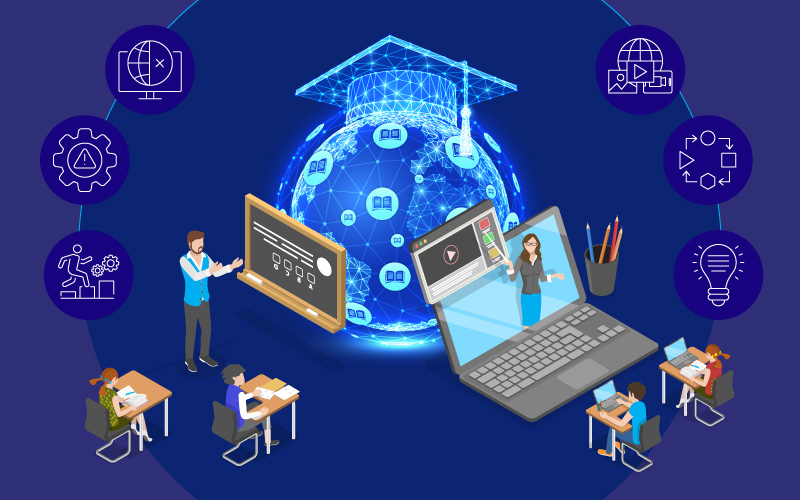Creating learning experiences that spark curiosity, build confidence, and feel meaningful to young learners.
Let’s be honest. Depending on the presentation, STEM may be either fascinating or frightening. I recall dozing off during a circuits lecture, despite my curiosity about how things operated. It was how it was presented, not the topic.
Creating STEM material for K12 students in today’s schools, particularly digital ones, entails more than only imparting knowledge. We must create experiences that have a sense of life. Students should feel free to explore, hear us in their own language, and be able to relate to our courses.
A strong STEM education creates the groundwork for abilities that extend well beyond the classroom. The goal of this blog is to share practical ways to create digital STEM content that sticks. These strategies have worked in real classrooms and have made a difference in how students think, question, and learn.

Understanding the K12 Learner: Creating Age-Appropriate STEM Content
Trying to teach a complex science concept to a second grader the same way you would to a teenager is like offering a calculus problem at a birthday party. It just doesn’t work.
Here is how to think about content based on age and learning level:
- Grades K to 5: These learners are in their imaginative years. They respond to vibrant visuals, simple language, and lots of stories. I once helped design a lesson where students sorted recyclable items for a cartoon dinosaur. They had no idea they were learning environmental science.
- Grades 6 to 8: This group is curious and ready for a bit of a challenge. They can handle puzzles, mini-investigations, and even beginner coding tasks. Something as simple as a digital crime scene where students analyze clues can make concepts like chemical reactions feel exciting.
- Grades 9 to 12: These learners want relevance. They want to know why a concept matters. This stage is where project-based learning works best. Let them create a prototype, simulate an engineering problem, or analyze real data from current issues.
When STEM content matches the learner’s age, it becomes more engaging naturally. The more they see themselves in the learning, the more likely they are to stick with it.

Harnessing Visual Storytelling to Simplify Complex STEM Topics
Have you ever attempted to explain gravity with just text. The foundation for skills that go well beyond the classroom is laid by a solid STEM education. It is simpler to comprehend abstract ideas when they are told visually.
Here are a few ways that work well:
- Infographics and animated videos: Rather than providing a thorough description of how blood circulates in the body, use an animated visual. The concept becomes clear in a matter of seconds.
- Narrative-based lessons: Make characters who experience difficulties that students assist solve. We previously produced a module about a little girl who wanted to create a wind-powered water pump for her hamlet. Students led her through each stage while teaching her about energy, design, and engineering.
- Augmented Reality (AR): Even something as basic as watching a volcano erupt on a smartphone screen makes learning more real. I saw students get absorbed by an AR module that allowed them to explore the inside of a cell. They talked about it for days.
When students feel part of a story, they retain the learning that comes with it.

Gamification in STEM eLearning: Strategies for K12 Success
Let’s be real. Students love games. If you can design a learning experience that taps into the thrill of completing a level or collecting a reward, you have their attention.
Here are a few ways to introduce gamification meaningfully:
- Badges and points: These serve as straightforward inducements. They provide students with a goal to strive towards and a means of monitoring their development.
- STEM quests: Frame the lesson as a mission. One module I helped develop challenged students to design a bridge that could hold a certain amount of weight using virtual materials. It was a hit.
- Light competition: Leaderboards can encourage engagement when handled carefully. Simply ensure that pupils are driven to surpass their own results rather than evaluating themselves against others.
Gamification works best when it adds value. The goal isn’t to distract students but to give them a reason to care about what they are learning.

The Science of Engagement: What Makes STEM Content Effective in K12?
It’s common to misunderstand engagement. It has nothing to do with flashy designs or fashionable apps. It has to do with the degree to which a student is involved in the process of learning.
Here are some engagement strategies that consistently make a difference:
- Interactive activities: Students may comprehend concepts rather than only reading about them by using interactive tools, virtual labs, and simulations.
- Adaptable material: Use technology that may alter the complexity or level of difficulty of the information based on a student’s performance. Customization keeps students from getting bored or stuck.
- Immediate feedback: Learner’s ought to be able to determine whether they are moving in the right direction. Tiny interactions, such as supportive comments or a pop-up suggestion, keep children engaged and confident.
Once, I witnessed a reserved child get very engrossed in a scientific simulation in which she constructed a basic mechanism. She made an effort, failed, changed, and worked it out on her own. That’s true involvement.

Designing Interactive eLearning Content for STEM Education in K12 Schools
In eLearning, interactivity is not only a desirable feature, but it is a need. Students stop being passive watchers and start acting as active participants when they can interact with the information.
These approaches can elevate your content from good to unforgettable:
- Virtual labs: Students may conduct safe online experiments in biology, chemistry, and physics using programs like PhET and Labster.
- Collaborative platforms: Google Classroom and Microsoft Teams are good choices for group projects, discussions, and experimentation.
- Interactive exercises: Include drag-and-drop activities, coding games, and the creation of 3D models. These give children the impression that they are creators rather than just pupils.
A physics module I worked on allowed students to design roller coasters based on principles of energy and motion. They spent more time fine-tuning their designs than they would have spent reading a chapter on kinetic energy.

Adapting STEM eLearning Content for Multilingual and Diverse Classrooms
Each classroom is unique in a number of ways. Content must be comprehensive, adaptable, and sensitive to various requirements in order to reach every student.
Here are some strategies that help:
- Language support: Provide translations, audio help, or subtitles wherever possible. For many students, even the ability to slow down narration has a significant impact.
- Cultural relevance: Use examples that reflect different regions and contexts. A unit on agriculture can compare farming in different climates or economies.
- Accessibility design: Stick to the basics of Universal Design for Learning. Clear fonts, alt text, simple navigation, and compatibility with screen readers make the content usable for everyone.
I once saw a class respond incredibly well to a unit that included weather patterns from their region. They felt seen, and they were excited to participate.
Conclusion
Though it doesn’t have to be difficult, STEM eLearning must be well-considered. The most effective teaching resembles an invitation to experiment.
Learners will recall experiences that are inclusive, age-appropriate, participatory, and visually appealing. Students are more inclined to continue learning even after the module is over when they believe that the material is theirs.
STEM education is about more than simply getting pupils ready for the workforce. It’s about providing them the knowledge and self-assurance to make changes in the world they live in.
Let’s create learning that does just that.

What’s Next?
Want to dive deeper? Check out our related blogs:
-
Understanding the K12 Learner: Creating Age-Appropriate STEM Content
-
Harnessing Visual Storytelling to Simplify Complex STEM Topics
-
Gamification in STEM eLearning: Strategies for K12 Success
-
The Science of Engagement: What Makes STEM Content Effective in K12?
-
Designing Interactive eLearning Content for STEM Education in K12 Schools
-
Adapting STEM eLearning Content for Multilingual and Diverse Classrooms









